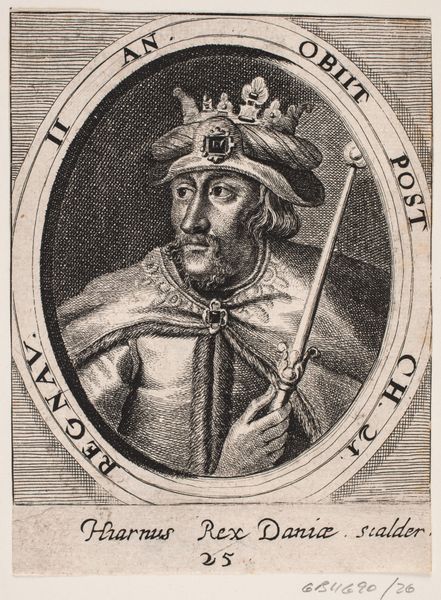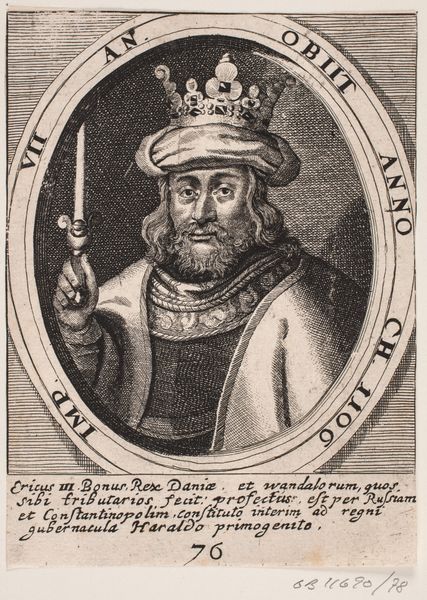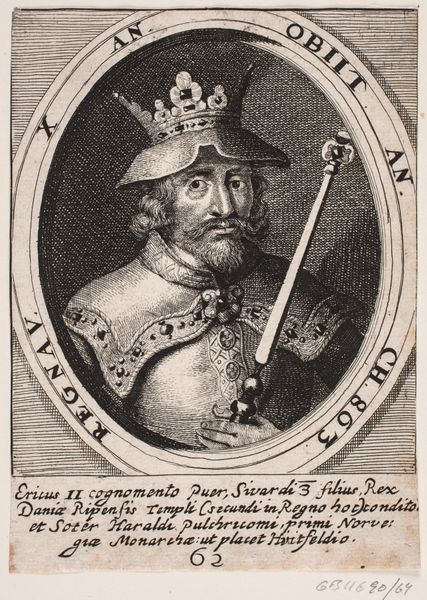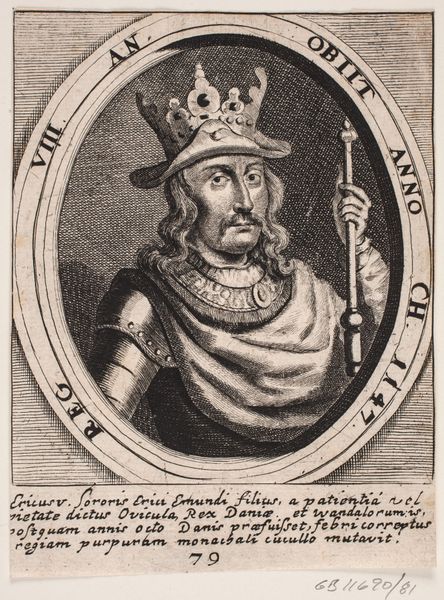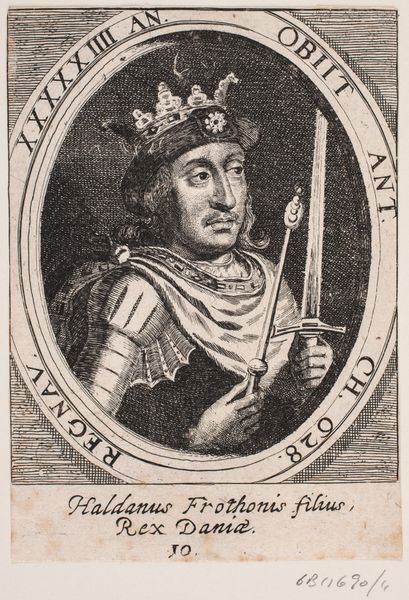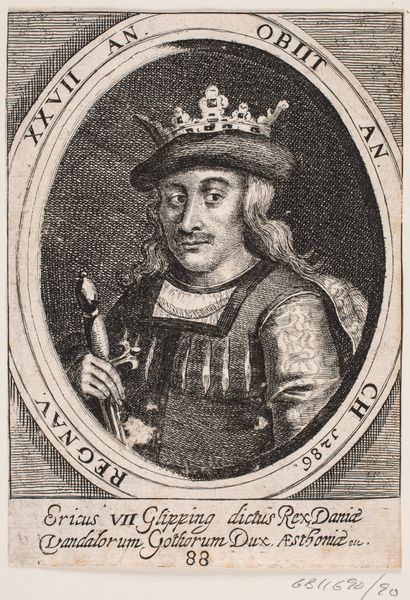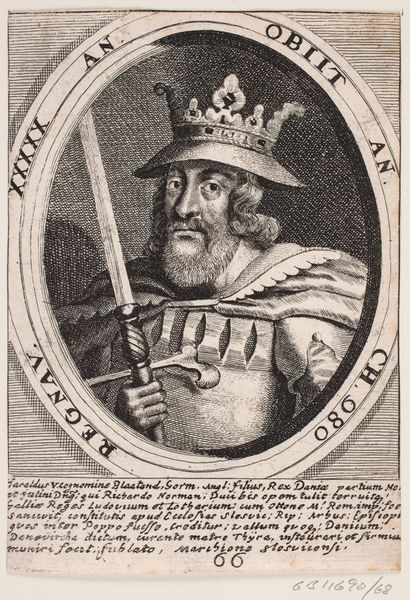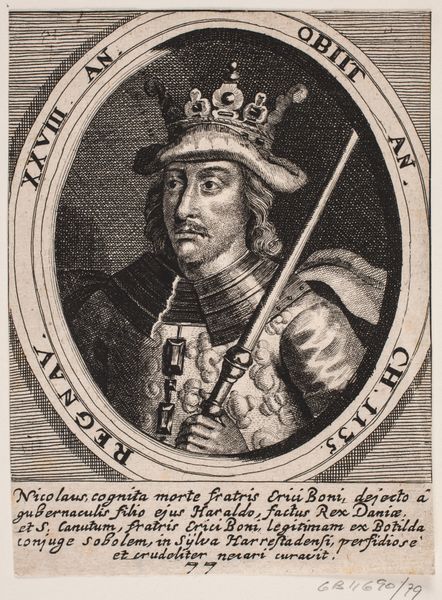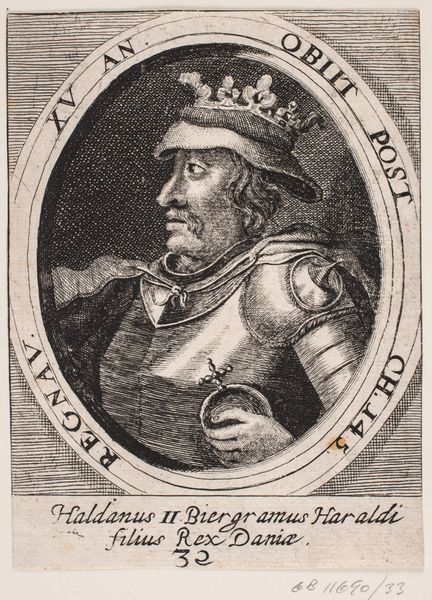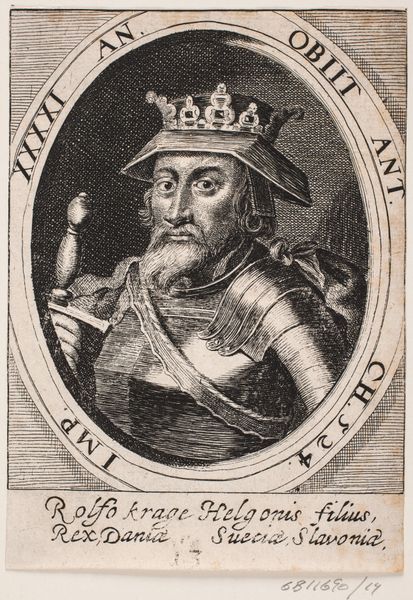
print, engraving
#
portrait
#
medieval
# print
#
history-painting
#
engraving
Dimensions: 140 mm (height) x 100 mm (width) (bladmaal)
Curator: Here we have "Kong Harald I", an engraving dating back to 1646. Editor: My initial impression is one of austerity and perhaps the weight of leadership etched onto the subject’s face. The intricate detailing of the engraving adds to the sense of historical gravitas. Curator: Absolutely. Though created much later, it reflects a medieval aesthetic common to many history paintings. We see Harald presented with all the symbols of power: the crown, the scepter, and the royal cloak fastened with a prominent clasp. These aren't merely decorative; they declare his sovereignty and connect him to the lineage of Danish kings. Editor: The artist’s mark-making to suggest the play of light is masterful. See the use of hatching and cross-hatching to define form, giving substance to his cloak and hinting at the textures of the metal in his crown. Curator: Observe too how these symbolic representations transcend mere material worth. The scepter is not simply a rod but a symbol of divine authority; the crown, a physical representation of the responsibilities assumed by the ruler. Each element tells a story, layering meaning onto Harald's portrayal. Editor: True. Also the portrait being set within an oval adds another layer of symbolic framing—almost a window into the past. It separates and elevates the image from its immediate surroundings, commanding your gaze to what's inside. Curator: I'd also like to add how the inscription framing the image is no mere flourish. In Latin, it commemorates his reign and death, offering an abridged biography that places the image within the scope of cultural memory. The artwork becomes more than just a visual artifact; it transforms into an account. Editor: It really does invite contemplation on how symbols of power were crafted and disseminated. Looking at "Kong Harald I," one recognizes a portrait but also an artistic strategy—an approach which still shapes collective memory. Curator: Precisely. Art invites these conversations between technique, material, cultural heritage, and meaning-making. This print connects to our present understanding of history. Editor: I think that even from this close study of aesthetic techniques and historic elements, one really starts to see all the decisions—artistic and historical—that went into defining not just one king, but the whole perception of royalty.
Comments
No comments
Be the first to comment and join the conversation on the ultimate creative platform.
